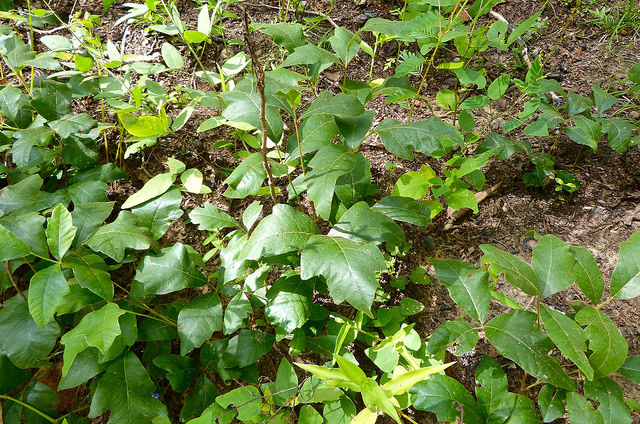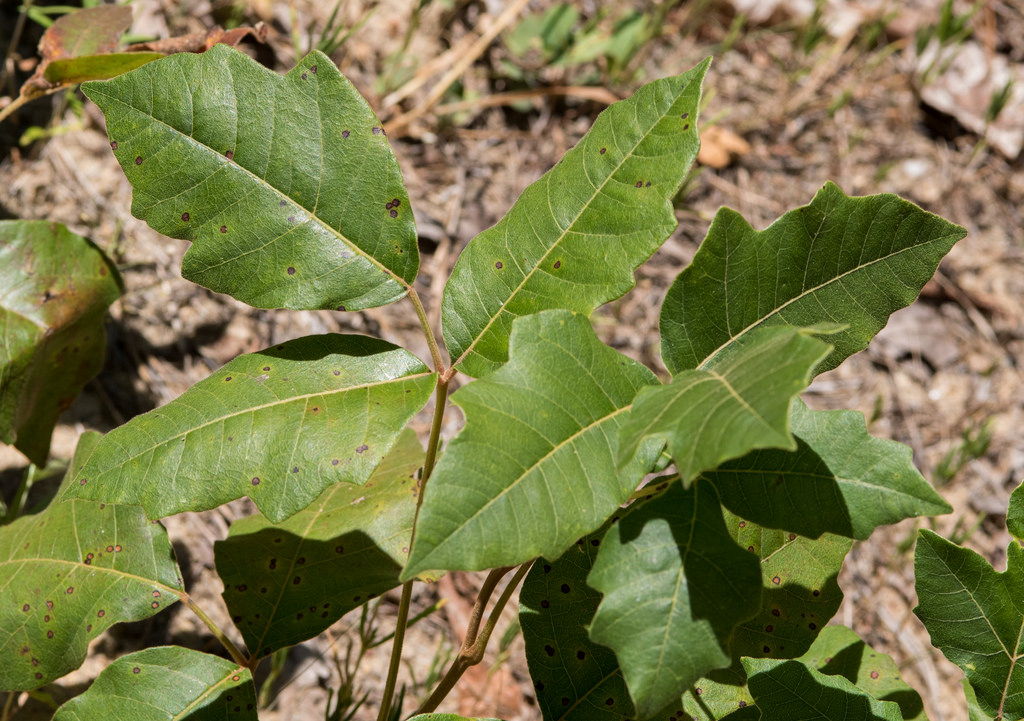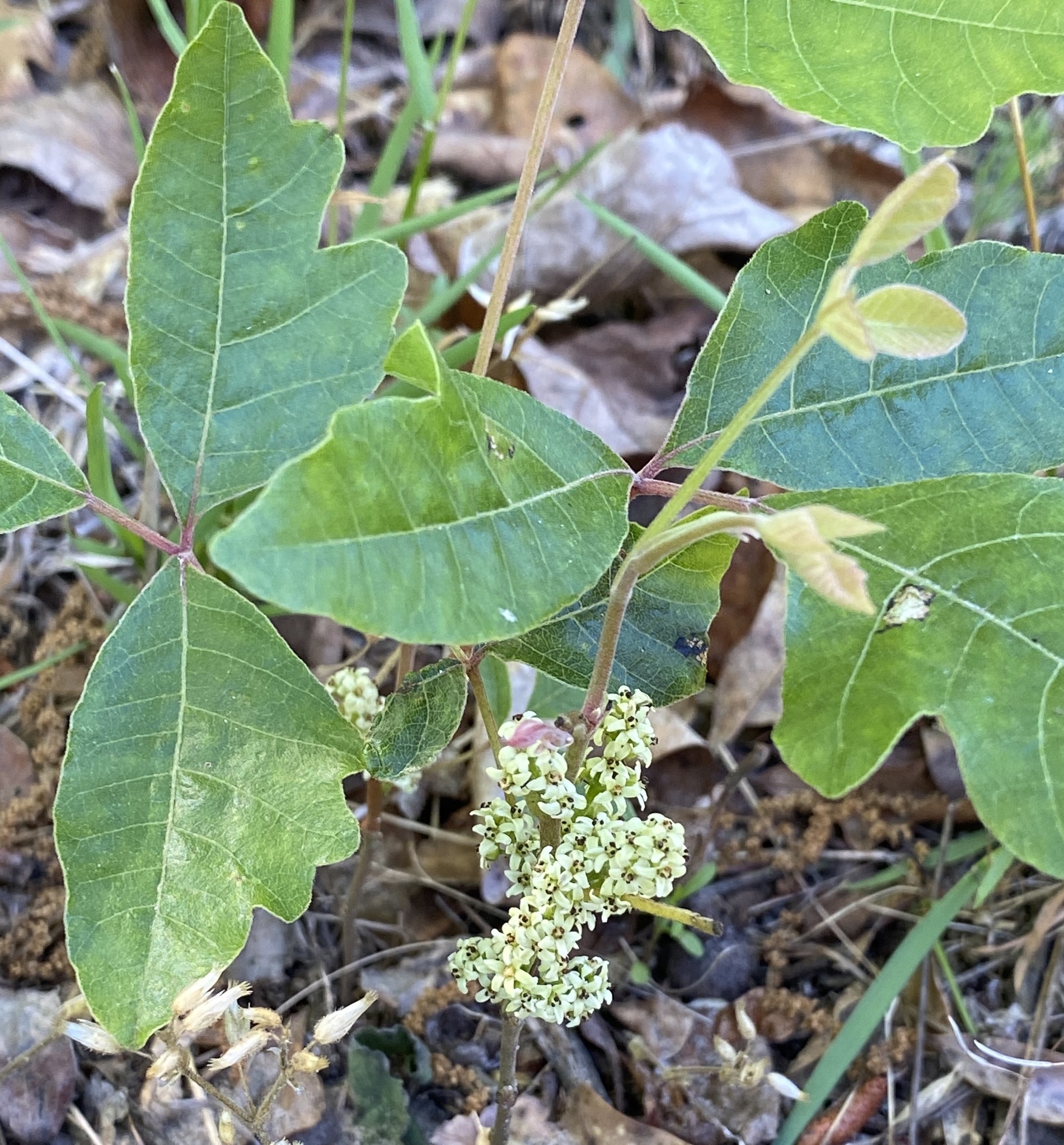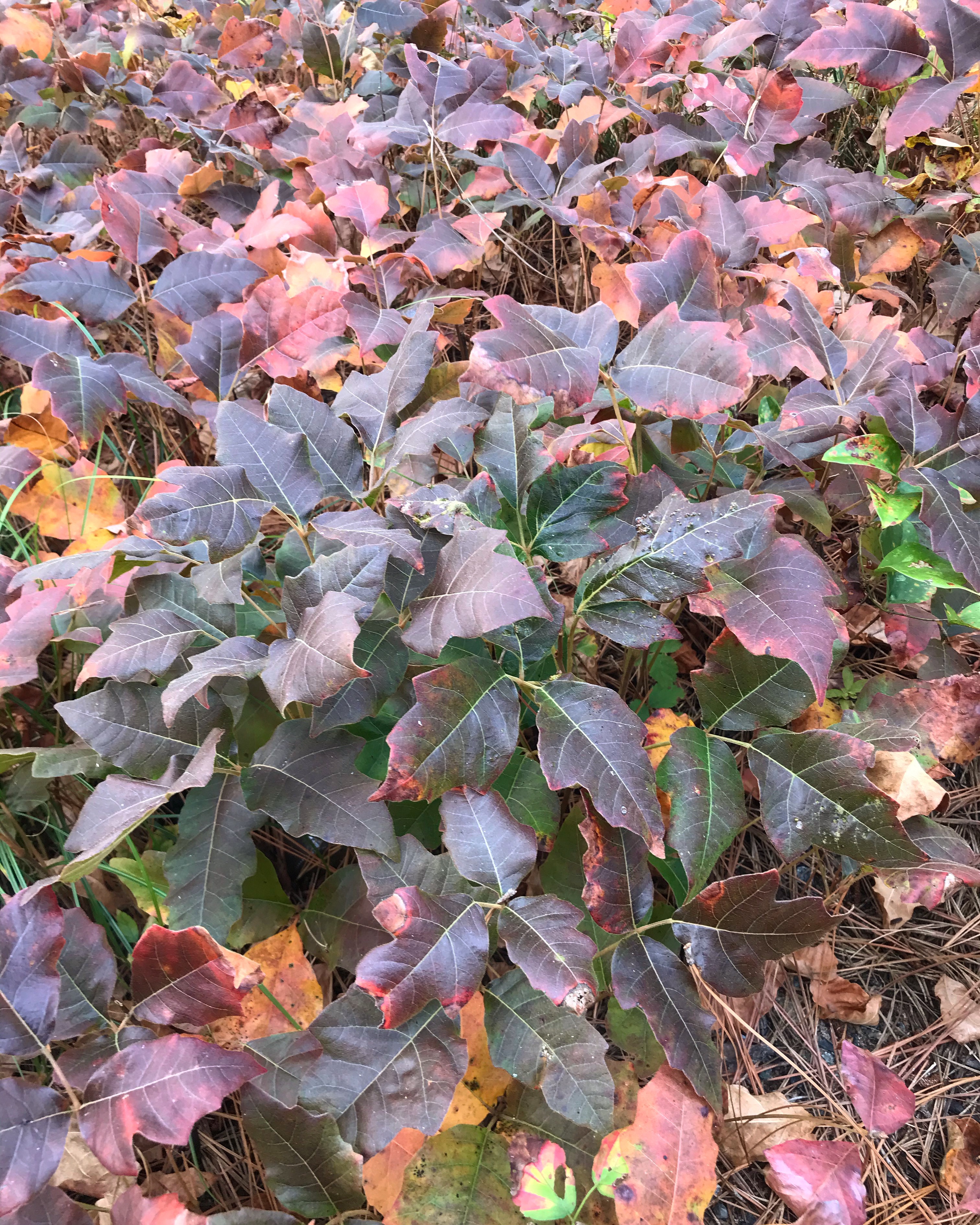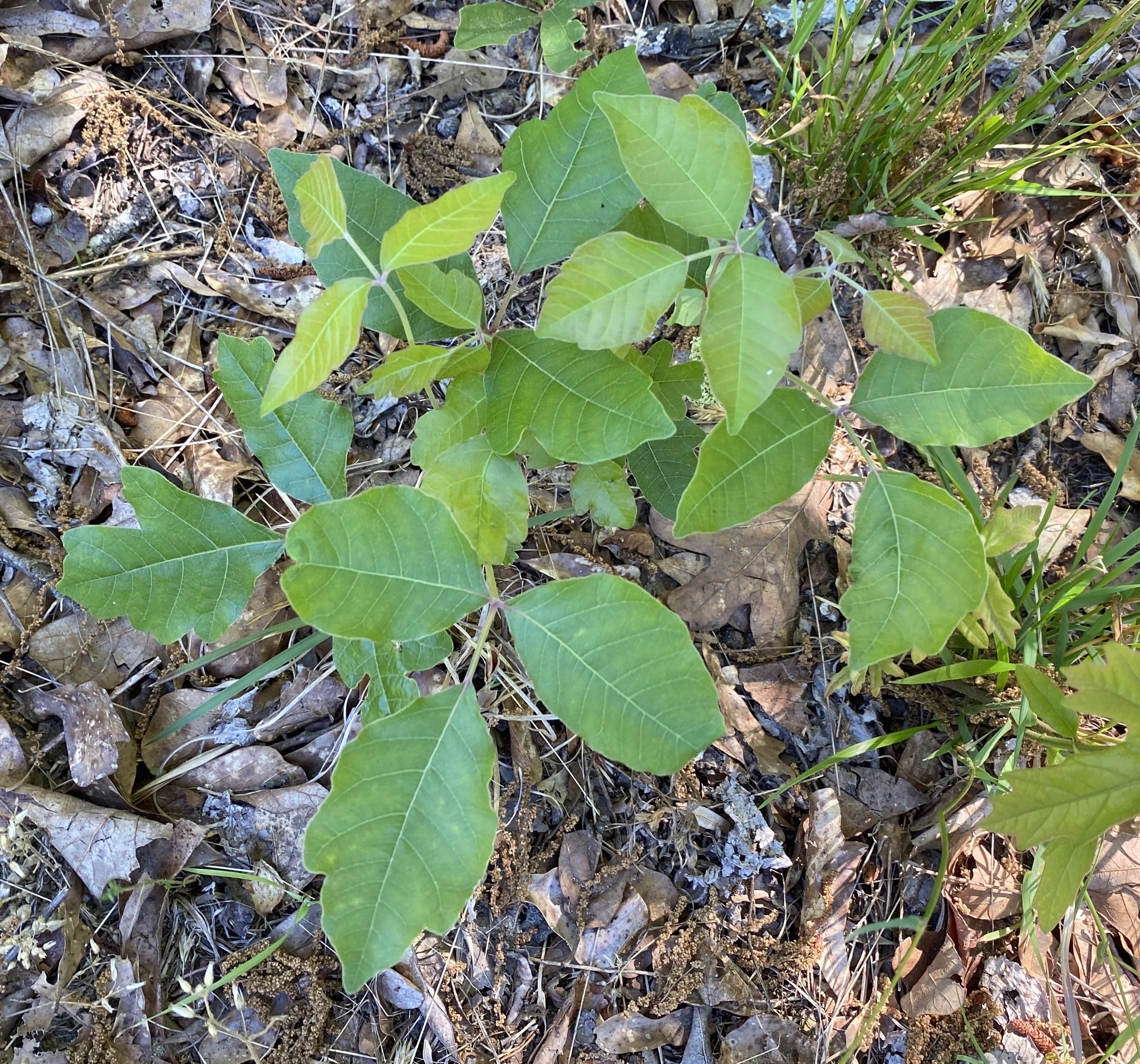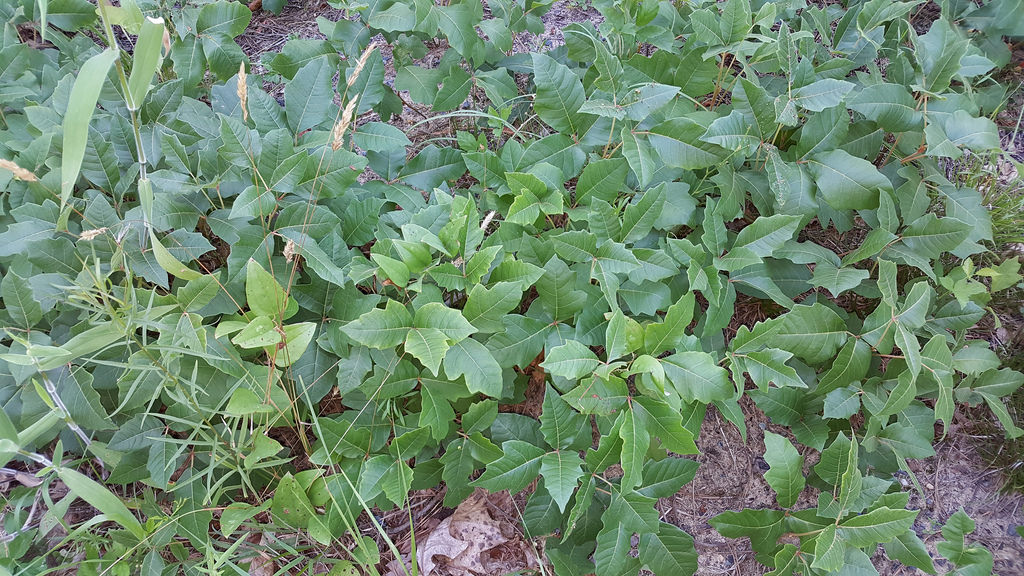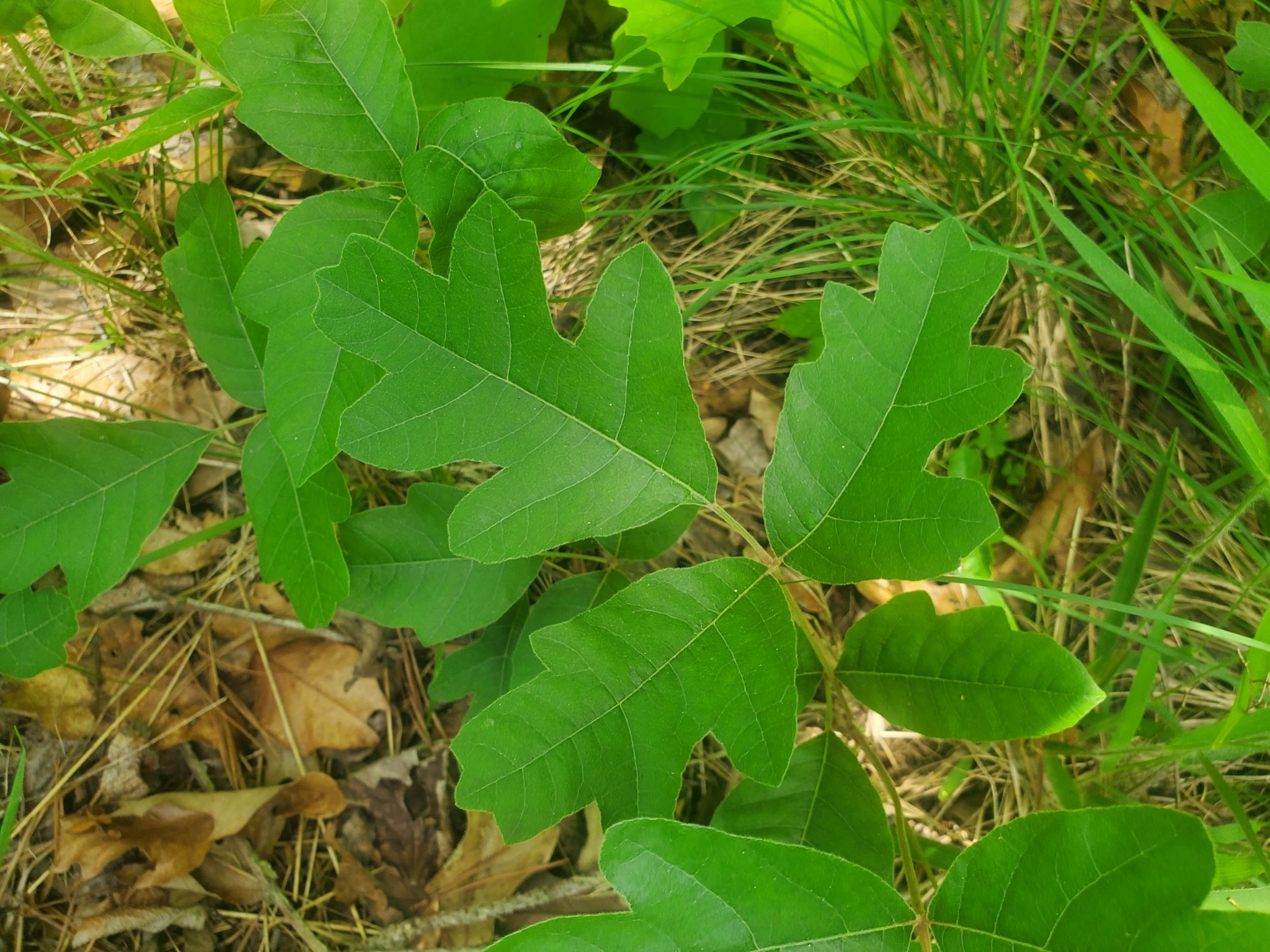Map Snapshot











44 Records
Relationships
Host plant for various moth species including Eyed Paectes Moth and Sumac Leaftier Moth (Database of the World's Lepidopteran Hostplants).
Can host Poison Ivy Leaf Gall Mite.
Seasonality Snapshot
Source: Wikipedia
| Atlantic poison oak | |
|---|---|
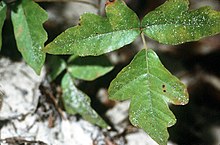
| |
| Scientific classification | |
| Kingdom: | Plantae |
| Clade: | Tracheophytes |
| Clade: | Angiosperms |
| Clade: | Eudicots |
| Clade: | Rosids |
| Order: | Sapindales |
| Family: | Anacardiaceae |
| Genus: | Toxicodendron |
| Species: | T. pubescens
|
| Binomial name | |
| Toxicodendron pubescens | |
| Synonyms | |
| |
Toxicodendron pubescens (syn. Rhus pubescens), commonly known as Atlantic poison oak,[2] or eastern poison oak, is an upright shrub which can cause contact dermatitis for most people.
Description
[edit]The shrub can grow to 1 metre (3 feet) tall. Its leaves are 15 centimetres (6 inches) long, alternate, with three leaflets on each. The leaflets are usually hairy and are variable in size and shape, but most often resemble white oak leaves; they usually turn yellow or orange in autumn. The fruit is small, round, and yellowish or greenish.
Taxonomy
[edit]It is not closely related to the true oaks in the beech family, instead being more closely related to sumacs. It is closely related to the other plants in the Toxicodendron genus, including poison ivy, poison sumac, and the lacquer tree.
Distribution and habitat
[edit]This species is native to the Southeastern United States from Virginia[3] westward to Texas and Oklahoma.
Atlantic poison oak can be found growing in forests, thickets, and dry, sandy fields.
Toxicity
[edit]All parts of this plant contain urushiol, which can cause severe dermatitis in sensitive individuals. The risk of exposure may be reduced by learning to recognize and avoid this species and wearing clothing that covers the legs and arms. Contaminated clothing should be laundered before subsequent handling or use.
Effects of poison oak are similar to those of its close relative poison ivy. It first causes severe itching, evolves into inflammation, non-colored bumps, and then blistering when scratched.
See also
[edit]References
[edit]- ^ NatureServe (30 June 2023). "Toxicodendron pubescens". NatureServe Network Biodiversity Location Data accessed through NatureServe Explorer. Arlington, Virginia: NatureServe. Retrieved 3 August 2023.
- ^ USDA, NRCS (n.d.). "Toxicodendron pubescens". The PLANTS Database (plants.usda.gov). Greensboro, North Carolina: National Plant Data Team. Retrieved 11 December 2015.
- ^ Digital Atlas of the Virginia Flora: Toxicodendron pubescens. Archived 2011-07-19 at the Wayback Machine
